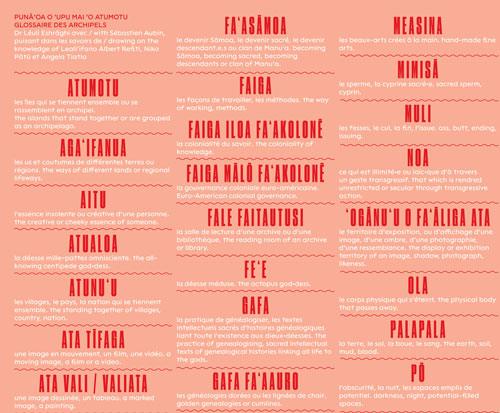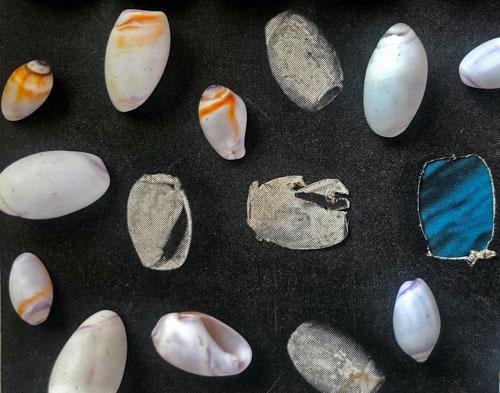Knowledge positions in Aotearoa and Turtle Island art museums
An interview with First Nations curators Kathleen Ash-Milby, Maia Nuku and Nigel Borell.

In 2019 I composed a poster form multilingual guide in Sāmoan, French and English called Punāʻoa o ʻupu mai ʻo atumotu/Glossaire des archipels to represent currents of thought and action in international Indigenous visual cultures. I worked with my friend, celebrated Nêhiyâw typographer and graphic designer Sébastien Aubin, to render my learnings from a constellation of mentors, knowledge keepers and sources during my doctoral research into international Indigenous curatorial practice into a poster form multilingual guide. The work draws on extensive discussions, residencies, exhibitions, gatherings throughout 2015–18 across the Great Ocean from north‑eastern North America to south‑eastern Australia.

kʔimitʸɨ, we are far away.
tsʔiqɨʔ, the tides are low.
qšimuʔ, like many words in tɨnɨsmuʔ tiłhinktitʸu, explains a story rather than a fixed or singular vocabulary. Olivella biplicata has a gorgeous shell, with colours that smoothly transition from stark white to milky lavender to rich honey golds, in combination or alone, along a softly curving spire. A being reflecting spiritual wealth and a symbol of exchange from our homelands spanning mountain ranges east to nitspu nakota ktitʸu, south well beyond recently imagined lines of occupying nations, and along margins of the sea north to nitspu unangan ktitʸu, qšimuʔ grounds yak titʸu titʸu yak tiłhini in a vast network of relation. yakʔitɨnɨsmuʔ wa yakʔitotomol, which echo the cadence, vocabulary, and sewn-planks of many other nations, extend these connections well across łpasini, the one ocean.
